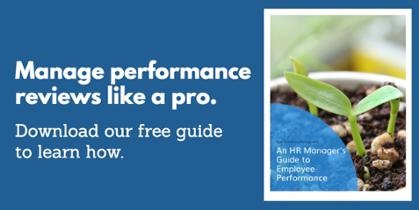 Annual performance reviews can be a source of dread for many supervisors. What could possibly be more awkward than a forced, stilted conversation with someone you hardly talk to all year? But with the right preparation and attitude, there’s no reason this process has to be so uncomfortable.
Annual performance reviews can be a source of dread for many supervisors. What could possibly be more awkward than a forced, stilted conversation with someone you hardly talk to all year? But with the right preparation and attitude, there’s no reason this process has to be so uncomfortable.
The success of the feedback process hinges on your commitment to building strong relationships with the people who report to you. Employees should trust that you know them, care about their career development, and are keeping tabs on their accomplishments all year. They should also be able to trust that you’ll give them honest feedback, even when it’s not a glowing review.
Preparing
Discussing employees’ goals, accomplishments, and opportunities for growth should not be relegated to a once-a-year conversation. As a supervisor, ideally you will have been clear and consistent in communicating your expectations of employee performance. If you haven’t been, commit to sharing your expectations going forward; you’ll find that employees thrive and their performance improves when they know what metrics they’re being evaluated on.
In the weeks leading up to your meeting with an employee about their performance, start to collect input from the employee. Maybe ask them to think about the past year of work and to write down the achievements they’re proudest of. This sets the process off on a positive note, but more importantly, it can help you and the employee fight the “recency effect." Only remembering the things that have happened in the last few months—good or bad— can color either party’s perceptions of performance and morale, and that makes an accurate assessment difficult.
Also consider getting feedback on employees from those who work most closely with them, if possible. The more input you can gather, the clearer an idea you’ll have about an employee’s strengths and weaknesses. If you gather input from others, the Harvard Business Review suggests you synthesize their input into a short report and give it to the reviewee ahead of time. Getting feedback from others can be nerve-wracking, and it’s a professional courtesy to allow your employee to get any jitters or emotional responses out of their system so that they can hear your feedback with a clear mind.
During the review meeting
You’ve probably heard of a “feedback sandwich,” where you start with positive feedback, sandwich in a little constructive criticism, and then end with more positive feedback. For someone trying not to rock the boat or hurt anyone’s feelings, this can be a tempting strategy. But according to the Harvard Business Review, this can send mixed messages to employees. Realistically, most of your employees are probably doing a good job overall, so take this time to recognize their success and build their job confidence.
As for the employees who need to step up their performance, they’re definitely not helped by hearing “here’s what you’re awesome at, here’s what you could maybe possibly improve, and here’s more of how you’re awesome.” They’ll walk away thinking they don’t need to do much to stay on track, and then if and when you need to do a serious course-correction in the future, they’ll be completely caught off-guard. It’s best to be truthful and specific; nobody can fix something they didn’t know was broken.
After you’ve given your employee the feedback you’ve prepared, as them how they feel about their work. See what their concerns are about their jobs, and let them tell you about the challenges they’ve faced or overcome in the last year.
To wrap up your meeting, discuss career goals for the next year within the company. What does the employee hope to accomplish? What steps can you both take to help achieve these goals? How are you going to check progress toward them? Make sure you’re very clear in laying out your expectations for the upcoming year’s performance. The clearer you are, the more likely you are to get what you’re asking for.
Following up
Throughout the year, make sure you’re following up regularly with all your employees about their goals. Show them that you’re invested in their development, and that you notice when they make progress toward achieving what they’ve set out to do.
Actively look for opportunities to give positive feedback. This can be tough when you’re busy focusing on doing your own job, but it’s crucial to maintaining employee morale. A simple comment or note of recognition costs you nothing, but it can go a long way toward preventing employee turnover. Forbes calls this “the cheapest bonus you’ll ever pay.”
If you can stay aware of each employee’s successes and struggles throughout the year, you’ll find that an annual review can be pretty painless. Nothing you’ll say in that meeting will come as a surprise to either party, and your working relationships with the people who report to you will be stronger. You may even find that you won’t even dread employee reviews any more!


